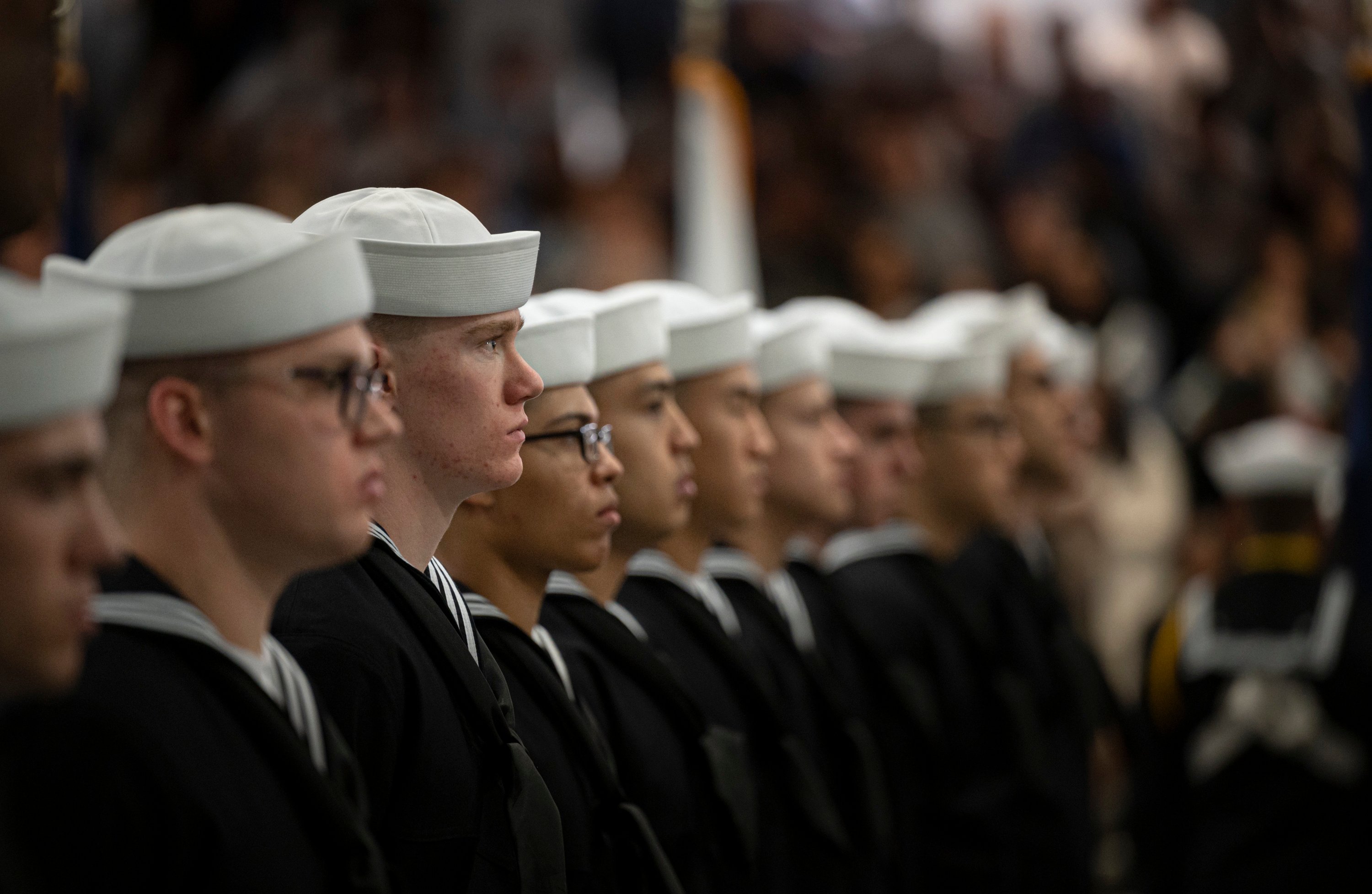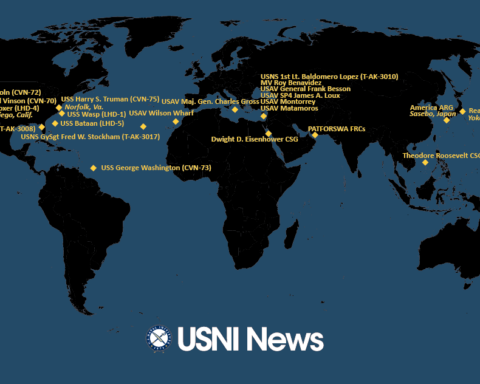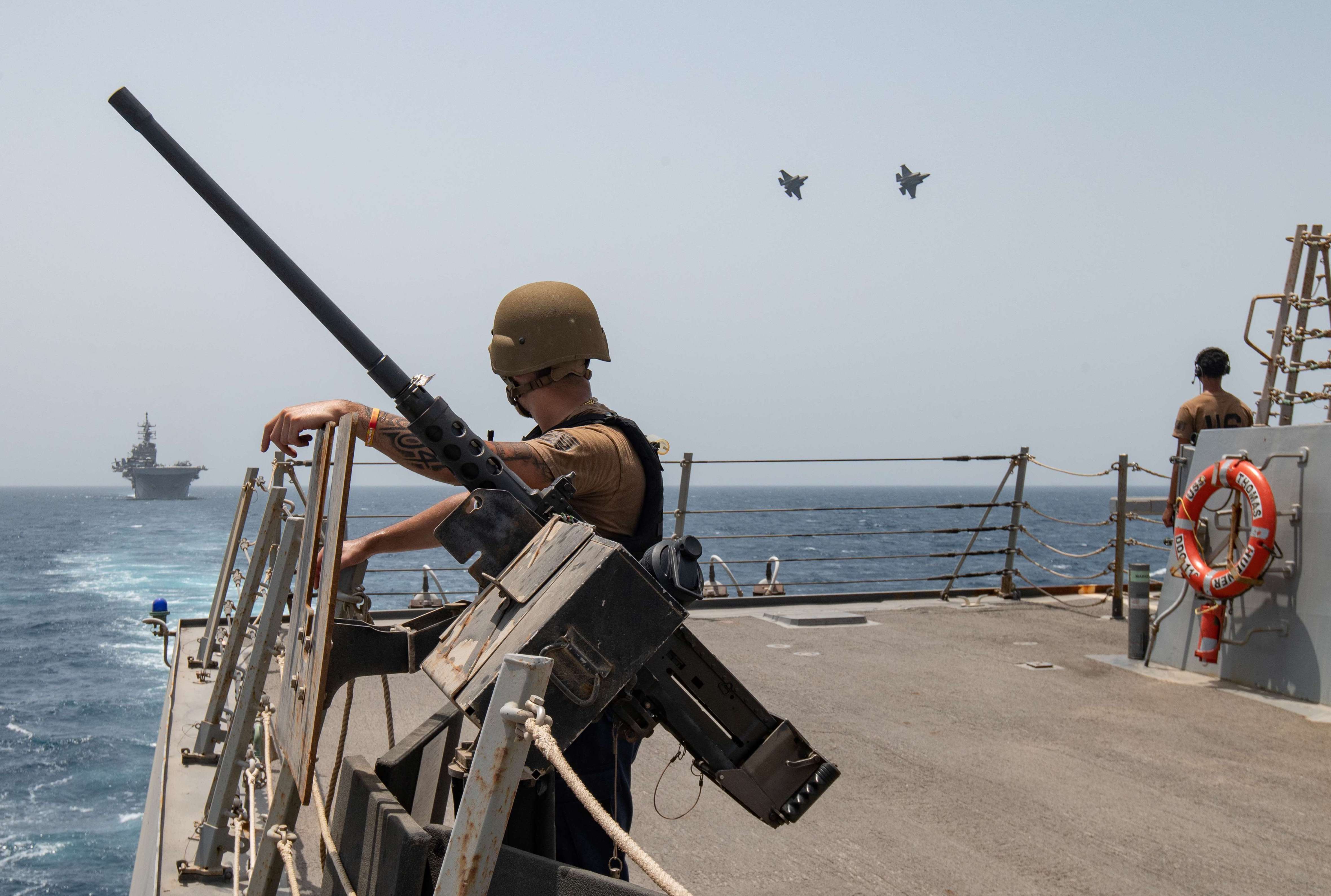
Amphibious assault ship USS Bataan (LHD-5) and landing dock ship USS Carter Hall (LSD-50), sailing on orders to the Persian Gulf region, crossed the Strait of Hormuz on Thursday, USNI has learned.
Both ships, part of the three-ship, 4,000-member Bataan Amphibious Ready Group, left Norfolk, Va., July 10 as a crisis-response force for U.S. Naval Forces Europe, and are carrying elements of the 26th Marine Expeditionary Unit (Special Operations Capable).
The Bataan ARG includes Amphibious Squadron 8, Fleet Surgical Team 8, Tactical Air Control Squadron 21, Helicopter Sea Combat Squadron 26, Assault Craft Unit 4 and Beach Master Unit 2. The 26th MEU(SOC), based at Camp Lejeune, N.C., includes Battalion Landing Team 1st Battalion, 6th Marines; Marine Medium Tiltrotor Squadron 162 (Reinforced); and Combat Logistics Battalion 22.
In late July, part of the ARG/MEU got redeployment orders to the U.S. Central Command, and, this week, joins other warships operating in the region as part of the U.S. response to Iran’s continuing threats and attempted seizures of commercial vessels transiting the Strait of Hormuz. Those include the July 5 attempted seizure of an oil tanker in the Gulf of Oman before the destroyer USS McFaul (DDG-74) arrived on the scene.
Iran’s recent maritime actions against merchant ships and, at times, military vessels in the region have continued despite a beefed-up presence of military assets since the spring and the 2019 establishment of the Coalition Task Force Sentinel. That operational arm of the International Maritime Security Construct formed in response to Iran’s threats to freedom of navigation and the free flow of trade in international waters. Members of the 11-nation coalition join in routine patrols and in Sentinel Shield interoperability exercises in the region.
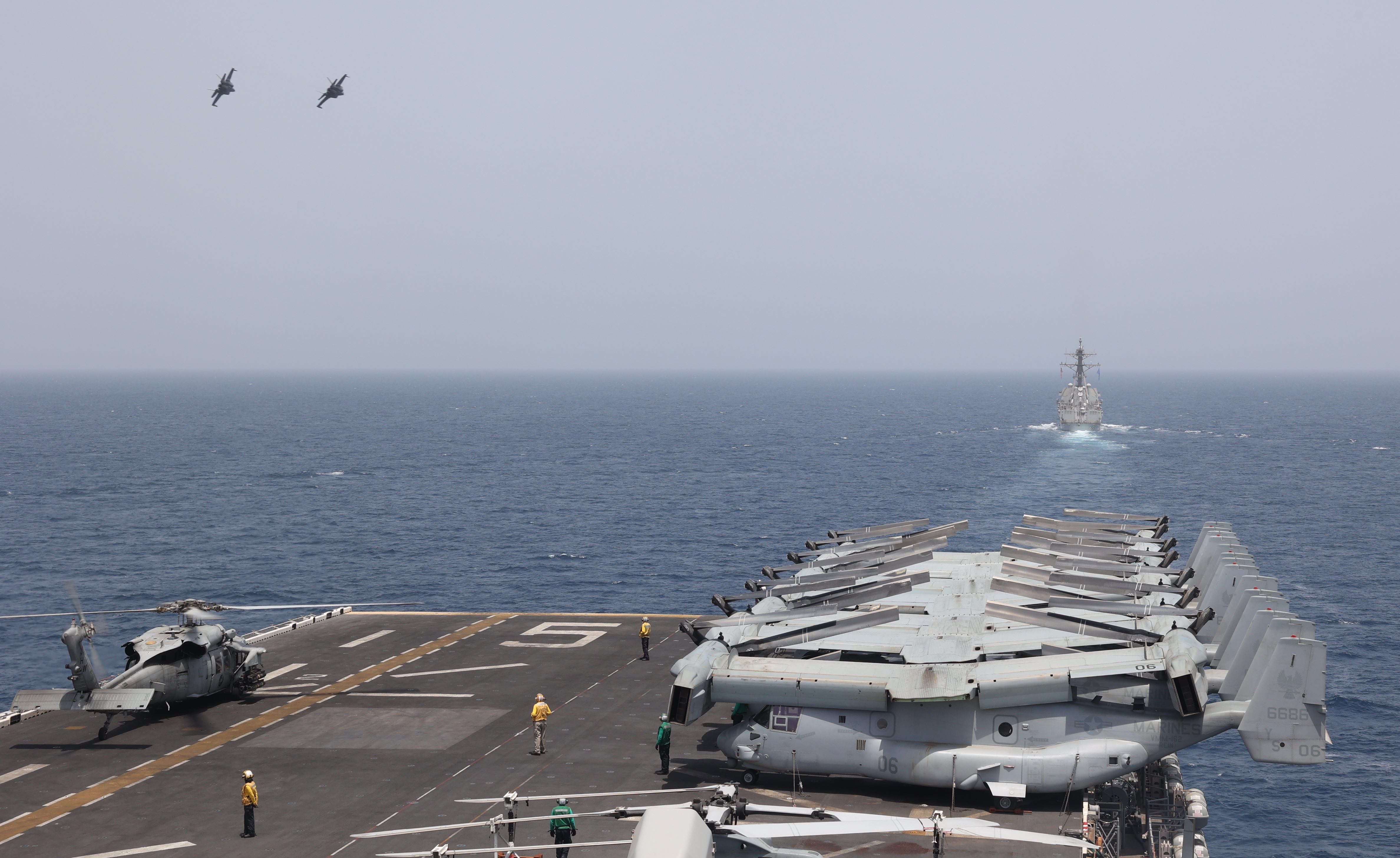
A Defense Department official declined to say whether the recent addition of U.S. forces to the region has deterred Iran’s malignant maritime moves.
“This is a trend that we will follow over time,” Pentagon Press Secretary Brig. Gen. Pat Ryder said during a Thursday press briefing at the Pentagon. “We believe that we are having a deterrent effect by working closely with our allies and our partners in the region. But it’s something that of course we have to stay after, which is why we located some additional assets in the region.”
“Our hope would be that the trend will downward,” Ryder said. “But ultimately that’s up to Iran. In the meantime, we’re going to do everything we can to ensure the safety and security in the region and the continued ability of commerce to transit the Strait of Hormuz unimpeded.”
Iran’s activities have continued this summer despite continuing economic sanctions and, until recently, a reduced U.S. naval presence in the Persian Gulf. But U.S. officials have strengthened the layered defense in the region that includes additional aircraft including F-16 and F-35 fighter jets, air and surface drones and other intelligence, surveillance and reconnaissance assets that have deployed to the Gulf region in recent months.
The security capabilities available in the region include a myriad of U.S. and allied forces, which most recently include at least 100 Marines from the 26th MEU(SOC) and sailors from other units. Those teams trained in Bahrain for potential deployment onto non-U.S.-flagged commercial ships as maritime security through hot spots for illegal interdiction like in the strait.
“Putting your escort security capability on the ship itself is an option,” said Dakota L. Wood, senior research fellow at The Heritage Foundation and a retired Marine Corps lieutenant colonel. “So they could be floating it out there to see how the Iranians respond, and with having this large group in the Persian Gulf – even if they aren’t yet on freighters – do you see a decline in attempted interdictions by Iranian naval forces? Does just the signaling work having them in the area?”
While armed security teams of Marines and sailors give U.S. military commanders another means to safeguard maritime traffic against those threats, defense officials haven’t publicly detailed how they could be employed and the rules of engagement to protect those forces or the hundreds of U.S- and foreign-flagged vessels that transit the Strait daily.
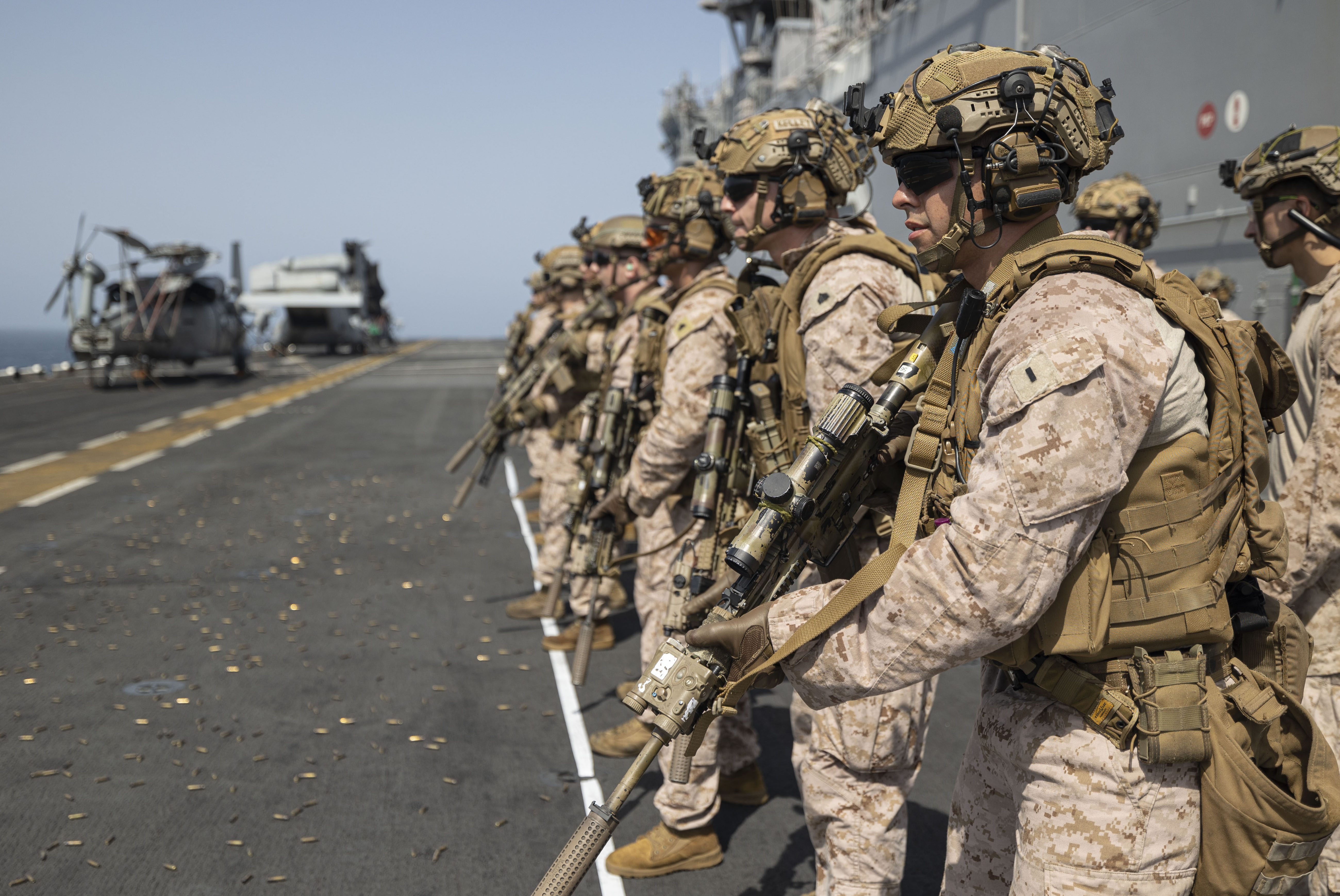
“You can’t defend them all,” said retired Maj. Gen. David Coffman, a veteran pilot and former 13th MEU commander. But a larger military presence in 5th Fleet combined with intentional ambiguity “gives you contingency, capability and ambiguity.”
By putting the bulk of the ARG/MEU team in the Persian Gulf, “they have a range of influence, particularly with the MV-22 and JSF that is thousands of miles,” Coffman said. “Now you have a capability in theater, from soup to nuts, that can do a whole range of missions,” he added. “There’s a strength in a strategic and tactical level ambiguity, if it’s backed up by contingency and presence.”
Iran’s continuing harassing actions in the Strait of Hormuz pose challenges to the shipping industry specifically and the global economy broadly.
“What do you do when legally-flagged commerce cannot go through international water, from one port to another port? There’s not a lot of good options,” Coffman said. “An option is: Let’s harden the targets.”
That wasn’t done back in 2009, when pirates routinely interdicted commercial ships and took crews hostage.
“Everybody was on their own,” recalled Coffman, who led the 13th MEU in its 2009 deployment with the Boxer ARG that included counter-piracy missions off Somalia by U.S. 5th Fleet’s Task Force 151 and rescue of the captain of the merchant ship MV Maersk Alabama after Somali pirates took him hostage.
The following year, the 15th MEU’s Maritime Raid Force deployed with the Peleliu ARG and rescued crew and retook another commercial ship, the MV Magellan Star, from nine pirates.
In the years since, some shipping companies hire maritime security firms to put armed civilian teams on commercial ships on some high-threat waterways to protect against piracy. But the maritime industry largely shuns having armed crew members aboard their vessels. While U.S. forces at times provide security aboard U.S.-flagged ships, putting Marines and sailors on foreign vessels raises legal questions, especially if they are deployed to deter potential threats at sea from a state-sponsored military force, like Iran’s Islamic Revolutionary Guard Corps, and coastal patrol units.
The rules of engagement for the embarked security teams “have got to be very clear… on when they’re allowed to shoot,” Wood said. “If you’ve got an Iranian speedboat coming alongside a freighter and you’ve got this team aboard ship, what are they authorized to do? They’re probably not going to be working for the ship skipper, or the (shipping) company or the insurance company. This is going to be a military chain of command. So whoever is going to be the team lead for that team that’s placed aboard the ship, they’re going to have to have reliable, constant responsive communications with whoever their authorizing command is.”
“Do they shoot first or do they wait to be shot at?” he said. If a situation deteriorates and a Marine is hurt or killed, “what are the consequences” to the state-versus-state relationship and potential retribution by Iran, he said, adding “there is this risk element of escalation and how people reply to these sorts of incidents. That really hasn’t been articulated by the administration.”
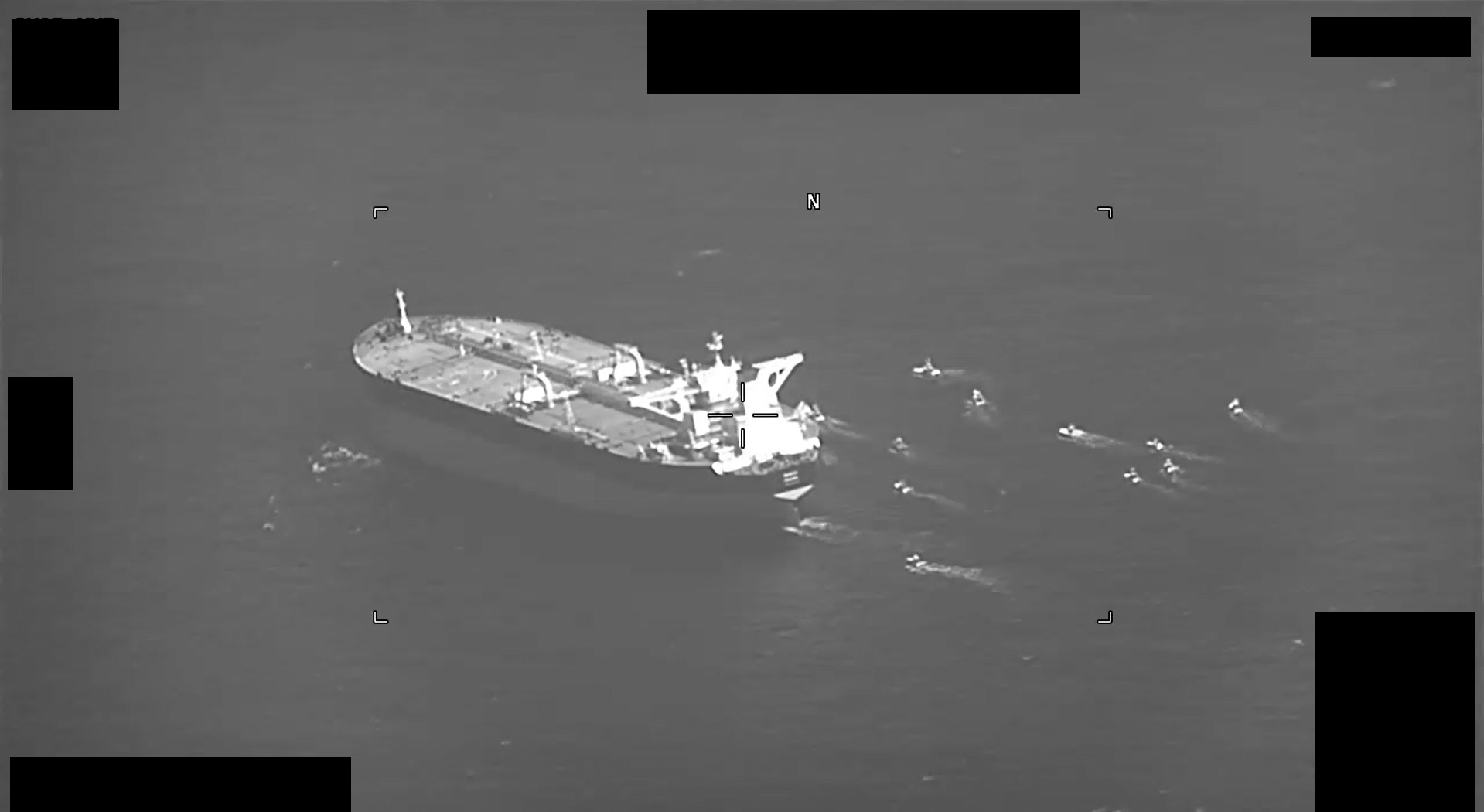
The added U.S. military assets present and deployed in the area – including the 26th MEU(SOC) and two amphibious ships – bolsters U.S. engagement in the Persian Gulf but also can increase tactical tension even as it shows the military’s deterrent capabilities, Coffman said. missing beginning quotes An LHD is a big ship. Just by having it in there, you’ve increased tension if you’re flying aircraft around, if you’re flying ISR,” he said. The recent moves show “this is how serious we are about this. We are prepared to embark Marines on a ship and… basically defy you to do what you’re doing that’s out of bounds.”
“So we are prepared for a tactical action to protect the free-flow of commerce and respect for international order and rules” and to deter Iran and other malign actors, he added. “In my view, you don’t deter Iran by not having a single U.S. ship in the Persian Gulf.”
Navy ships that deploy to CENTCOM and the Persian Gulf are “not just showing up,” Coffman said, noting the long-term relationships founded in the coalition of maritime forces in U.S. Naval Forces Central Command. “This is a managed theater with high U.S. activity, despite the complaint that it’s not enough.”
Meanwhile, as Bataan and Carter Hall crossed the strait that’s a strategic navigational chokepoint in the U.S. 5th Fleet region, other ARG/MEU Marines and sailors aboard transport dock ship USS Mesa Verde (LPD-19) remain in the U.S. 6th Fleet region.
The sailors along with Marines including members of BLT 1/6, are participating in a scheduled bilateral training in Norway with Norwegian soldiers and marines with Italy’s naval special forces, according to the 26th MEU(SOC).
“This is a great opportunity for the Marines and sailors to work closely with some of our valued NATO allies and partners,” Col. Dennis Sampson, the 26th MEU(SOC) commander, said in a Thursday release about the exercise. “Successfully integrating the Italian Marines from the San Marco Brigade into our formation with the Marines of Charlie Company, BLT 1/6 and conducting integrated training with Norwegian Soldiers from Brigade North was easy, and truly showcases our interoperability and interdependence with our allies and partners within the Sixth Fleet AOR.”
The split-MEU force in Norway is led by the 26th MEU(SOC)’s Bravo Command element, according to the unit. Its deployment aboard Mesa Verde as its command ship still maintains a strong, capable force for military commanders in Europe, Coffman said, as the San Antonio-class LPD has enhanced command-and-control capabilities, Level II medical care and sizable aviation space to support independent operations.




